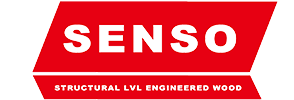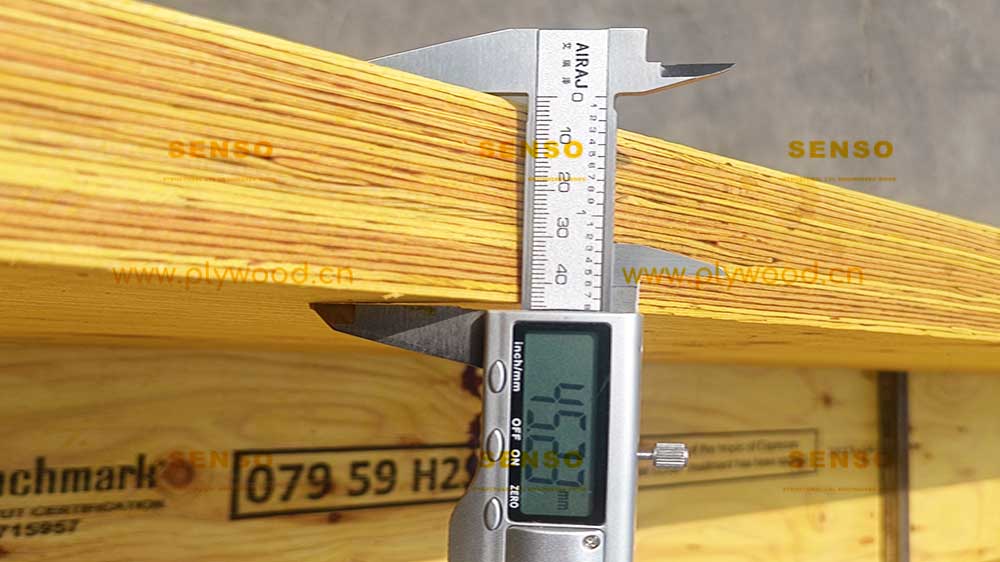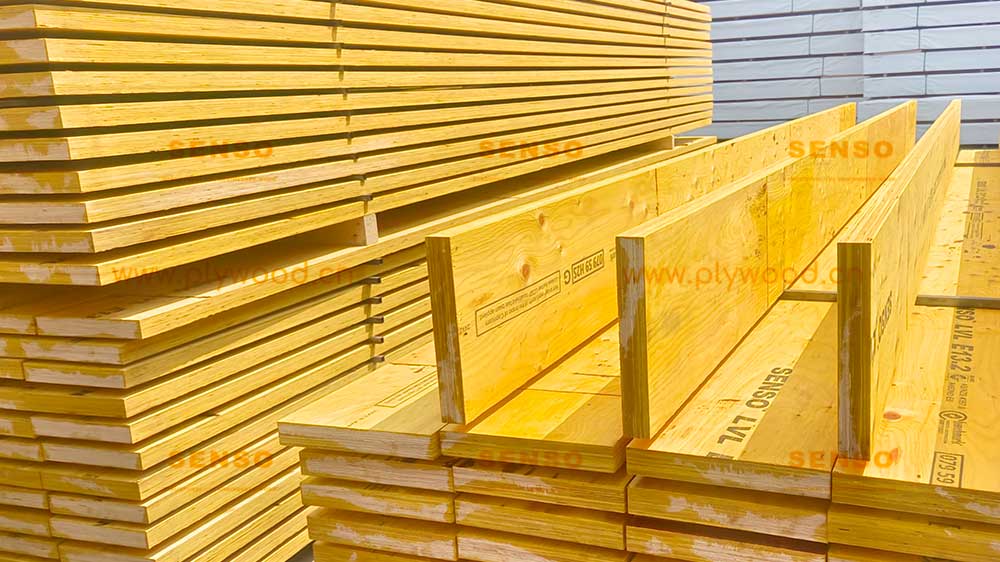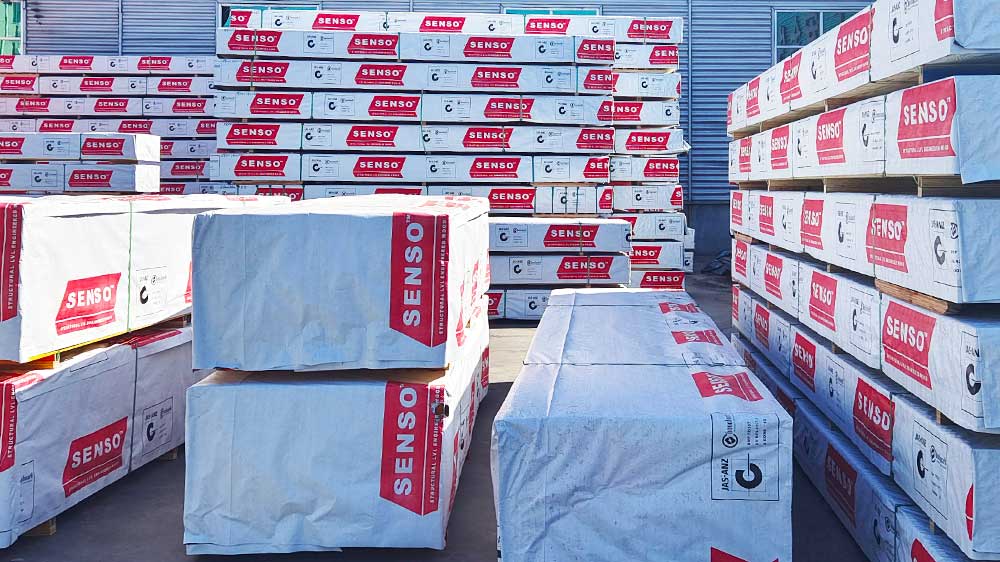What is LVL I Beams?
Laminated Veneer Lumber (LVL) I beams are a high-strength engineered wood product used extensively in the construction industry. Comprising multiple layers of thin wood veneers bonded together under heat and pressure, LVL I beam offer enhanced structural integrity and stability compared to traditional solid wood beam. Their I-shaped cross-section provides optimal load-bearing capacity and stiffness, making them a popular choice for floor and roof joists, headers, and beams in residential and commercial buildings.
The Advantages of LVL I Beams
Unmatched Strength and Durability
LVL I beams boast superior strength and durability, outperforming conventional lumber in load-bearing capacity and resistance to warping, twisting, and shrinking. This makes them ideal for applications requiring long spans and heavy loads.
LVL I Beams Design Flexibility
The versatility of LVL beams allows for innovative architectural designs, including open floor plans and large, unsupported spans. Their consistent quality and dimensional stability enable precise fitting, reducing the need for additional support structures.
Environmental Sustainability
As an engineered wood product, LVL I beam are a sustainable choice. They are made from fast-growing, renewable timber species and utilize nearly the entire log, minimizing waste. Additionally, their production process requires less energy compared to steel or concrete.
Applications of LVL I Beams
Residential Construction
In residential buildings, LVL I beam are commonly used for floor joists, roof rafters, and ridge beams, providing a sturdy framework for homes.
Commercial and Industrial Projects
Their strength and long-span capabilities make LVL I beam suitable for commercial and industrial constructions, such as warehouses, offices, and retail spaces.
Renovations and Additions
LVL I beam are often chosen for renovation projects, including home extensions and loft conversions, where existing structures need reinforcement or additional support.
Technical Considerations
Load-Bearing Capacity
The design of LVL beams takes into account various factors such as span length, load type, and beam spacing, ensuring optimal performance under different conditions.
LVL I Beams Installation and Handling
Proper installation and handling are crucial for the effectiveness of timber frame. It’s important to follow manufacturer guidelines and local building codes to ensure safety and structural integrity.
Economic Benefits
Cost-Effectiveness
While beam wood may have a higher initial cost compared to traditional lumber, their superior strength and durability can lead to long-term savings by reducing the need for repairs and maintenance.
Efficiency in Construction
The use of beam of wood can expedite construction processes, thanks to their uniformity and ease of installation. This can result in shorter project timelines and reduced labor costs.
Enhancing Structural Integrity with LVL I Beams
Seismic Performance
LVL I beams exhibit excellent seismic resilience, making them ideal for use in earthquake-prone areas. Their ability to absorb and dissipate energy during seismic events helps prevent structural damage and ensures the safety of occupants.
Fire Resistance
While wood is naturally combustible, LVL I beam can be treated with fire-retardant chemicals to enhance their fire resistance. This treatment can slow down the spread of fire, providing valuable time for evacuation and firefighting efforts.
Moisture Resistance
LVL I beams are engineered to resist moisture absorption, which is crucial in preventing decay, mold growth, and structural weakening. This makes them suitable for use in humid or wet environments.
LVL I Beams Design Considerations
Aesthetic Appeal
The clean, straight lines of LVL beam lend a modern, minimalist aesthetic to buildings. They can be left exposed in interior designs to create visually striking architectural features.
Customization
LVL I beams can be custom-manufactured to specific lengths and sizes, accommodating unique design requirements and minimizing the need for on-site modifications.
Compatibility with Other Materials
Timber frame can be easily integrated with other construction materials such as steel, concrete, and traditional wood, allowing for versatile and innovative building designs.
Sustainability and Environmental Impact
Carbon Footprint
The production of beam wood has a lower carbon footprint compared to steel or concrete. The use of renewable timber and energy-efficient manufacturing processes contributes to their eco-friendly profile.
LVL I beams Certification and Standards
Many LVL I beam manufacturers adhere to strict environmental standards and certifications, such as the Forest Stewardship Council (FSC) or the Sustainable Forestry Initiative (SFI), ensuring responsible sourcing and production practices.
Recyclability
At the end of their lifecycle, beam of wood can be recycled or repurposed, further reducing their environmental impact and promoting a circular economy in the construction industry.
LVL I beams Installation and Maintenance
Ease of Installation
LVL I beams are lightweight compared to steel or concrete, making them easier to handle and install on-site. This can lead to faster construction times and reduced labor costs.
Maintenance Requirements
LVL I beam require minimal maintenance compared to traditional wood beams. Regular inspections and occasional protective treatments can ensure their longevity and performance.
Adaptability
LVL I beams can be easily modified or reinforced if necessary, providing flexibility for future renovations or structural changes.
Economic Considerations
Return on Investment
The durability and low maintenance requirements of LVL I beams can result in a higher return on investment over the lifespan of a building.
Market Demand
The growing awareness of sustainable building practices has led to an increased demand for LVL beam, making them a valuable addition to any construction project.
LVL I Beams Addressing Common Misconceptions
Myth: LVL I Beams Are Not as Strong as Steel
Contrary to popular belief, timber frame can provide comparable strength to steel beams in certain applications, especially when considering their strength-to-weight ratio. They are engineered to handle high loads and long spans, making them a competitive alternative to steel in many construction projects.
Myth: LVL I Beams Are Prone to Insect Infestation
LVL I beams are treated with insect-resistant chemicals during the manufacturing process, significantly reducing the risk of infestation. Proper installation and maintenance can further ensure their resistance to pests.
Myth: LVL I Beams Are Not Eco-Friendly
LVL I beams are actually a more sustainable choice than many traditional construction materials. They are made from renewable resources and have a lower environmental impact in terms of energy consumption and carbon emissions.
Future Trends in LVL I Beams Usage
Innovations in Manufacturing
Advancements in technology and manufacturing processes are expected to further improve the strength, durability, and sustainability of beam of wood, making them even more attractive for future construction projects.
Integration with Smart Building Technologies
Beam wood can be incorporated into smart building designs, where sensors and other technologies are embedded within the beams to monitor structural health and environmental conditions, enhancing safety and efficiency.
Growing Emphasis on Green Building
As the global focus on sustainability intensifies, the demand for eco-friendly construction materials like LVL I beams is likely to increase. They will play a crucial role in the development of green buildings and sustainable urban infrastructure.
LVL I Beams Frequently Asked Questions (FAQs)
What is an LVL beam?
An LVL (Laminated Veneer Lumber) beam is an engineered wood product made from multiple layers of thin wood veneers bonded together under heat and pressure. It is used in construction for its strength and stability.
Is LVL cheaper than steel beam?
The cost comparison between LVL and steel beams depends on various factors such as material prices, availability, and project requirements. In some cases, LVL can be more cost-effective, especially when considering long-term performance and maintenance.
Why are LVL I Beams so strong?
LVL beams are strong due to their engineered structure, where multiple layers of wood veneers are bonded together, aligning the grain for optimal strength. This results in a uniform and consistent product that can handle high loads and resist warping and twisting.
Are LVL beams strong?
Yes, LVL beams are known for their high strength and load-bearing capacity, making them suitable for use in a wide range of structural applications in construction.
What does LVL stand for?
LVL stands for Laminated Veneer Lumber, a type of engineered wood product used in construction for its strength and stability.
LVL I Beams in Building Design
LVL I beams offer a compelling combination of strength, versatility, and environmental sustainability, making them a valuable asset in modern construction. Their ability to meet the demands of innovative architectural designs while adhering to green building principles positions them as a future-forward choice for builders and developers. As the construction industry continues to evolve, the adoption of LVL I beam is expected to grow, driven by their proven performance and the ongoing shift towards more sustainable building practices.
Post time: May-18-2024




